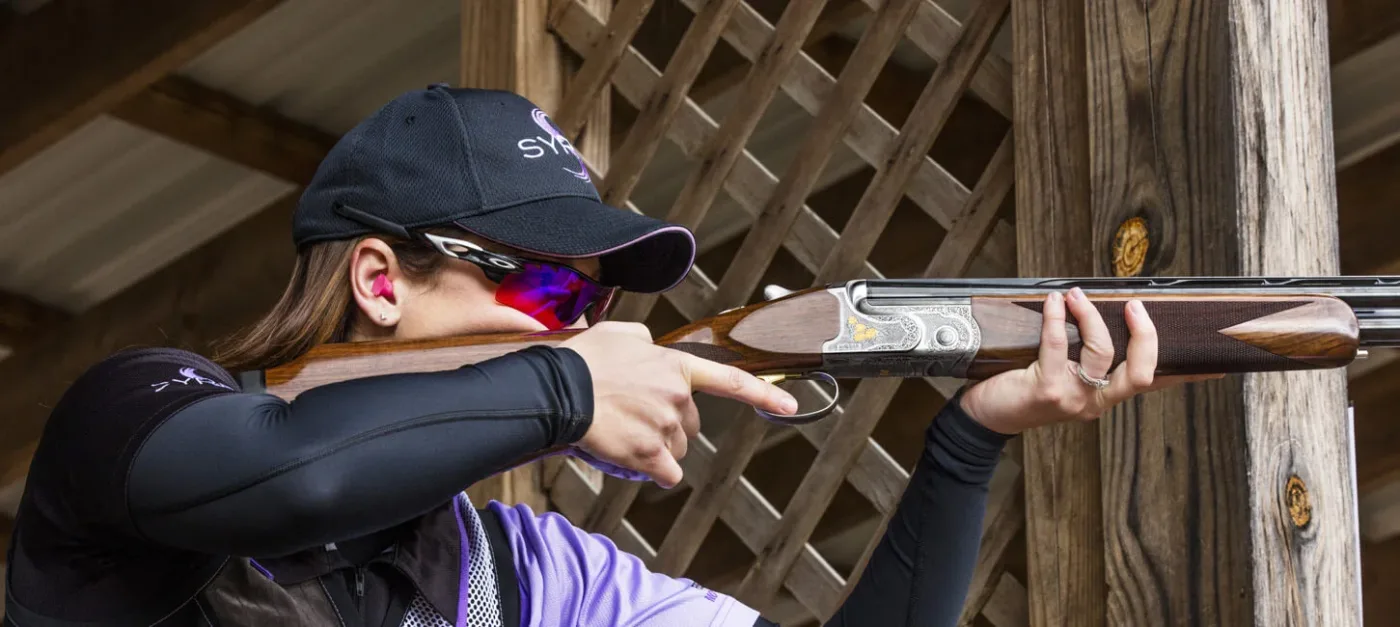The best sporting clays shotgun is the one that fits you!
Shotgun fit isn’t a term you may not hear often, but one that has the greatest impact on your success as a shotgun shooter. Most hunters and sporting clay enthusiasts read a few “The Best Sporting Clays Shotgun” lists, select a factory gun off the rack, test its heft, eye the finish, and purchase it. Now, this isn’t to say that your new shotgun won’t be effective, but it won’t be as precise as it could be because most mass-produced shotguns are designed for the “average shooter’s build,” forcing the shooter to adjust and adapt to the shotgun rather than having the gun adjusted to fit them.
When a shotgun has been properly fitted to the shooter, it feels comfortable to the shooter. When mounted, it becomes an extension of their body, in natural symmetry with their eyes, head, and arms. It rises fluidly to the cheek, rests comfortably on the shoulder, and the shooter’s eyes align almost instinctively down the barrel. Now doesn’t that sound like the best sporting clays shotgun?
So what parts of your shotgun should we focus on? Mount, stock length, and sight picture.
Mount
When you mount your shotgun, check the distance between your thumb and nose. We recommend at least an inch of spacing to account for recoil. You want to avoid striking your nose and breaking your concentration on the range or out in the field. You want to keep your eyes downrange and your barrel tracking the next target.
Stock Length
When considering stock length, there are three specific measurements to account for: drop at comb, heel, and length of pull. Using these three measurements to fit a shotgun to your body will significantly affect your shooting success.
A stock that is too long may catch under the armpit or drag on the lower shoulder—delaying your ability to acquire a target. Whereas a stock that is too short may cause a conflict with your face and hand. You should also take into account the seasons. You’re probably wearing a thin shirt when shooting in the summer, whereas you’ll be layered up during the winter months. So a stock that fits you in the winter might be an inch or two too short in the summer. A quick way to adjust your stock length is to add or remove spacers in front of the recoil paid.
Sight Picture
Since most shotguns have no rear sights, the shooter sights along a plane from breech to barrel muzzle. In effect, the shooter’s eye is the rear sight. Thus, the amount of drop at the comb is significant in its impact on success or failure. Should the comb be too low, the shooter’s eye will be too low when the gun is mounted and will miss low. Conversely, the shotgun will miss high if the comb stands too high. Shooters also need to determine if they want to see the rib and the bead or just the bead when sighting down a target. This is a point of personal preference, and there’s no better place to determine your preference than at a trap range, shooting targets repeatedly.
90% of shooters will be happy with their off-the-rack shotgun, but you’re not like everyone else, are you? A discriminating shooter such as yourself should consider working with Mid-Valley Clays Shooting School to choose a shotgun with the proper measurements for your body type, then adjust or alter the stock from there and work with you to determine your optimal sight picture.
Call or stop by our range today and let’s talk about how you can be a better shooter.

